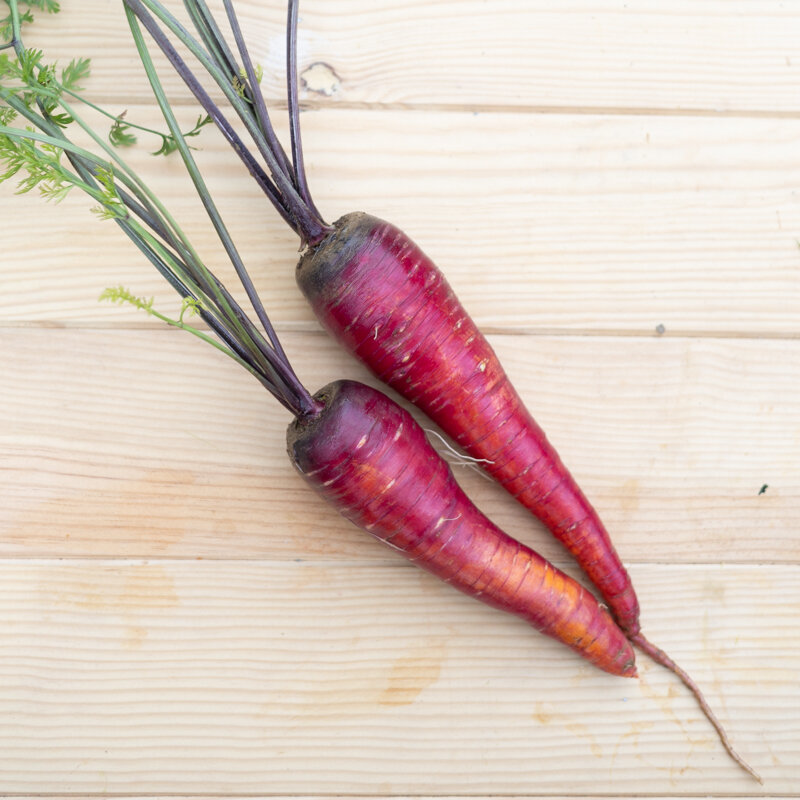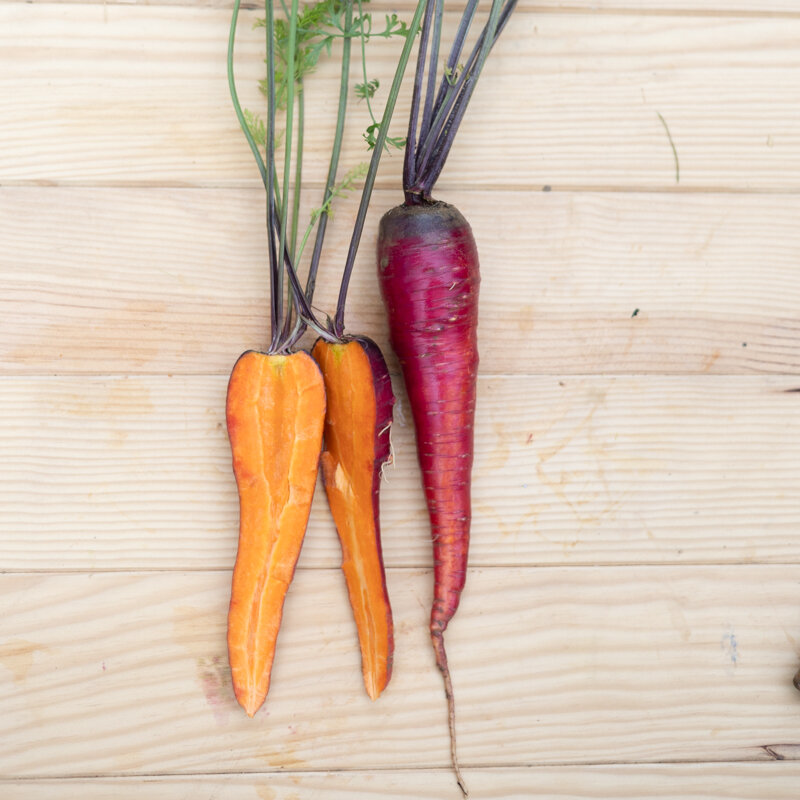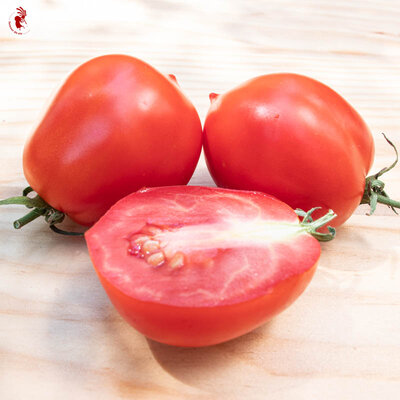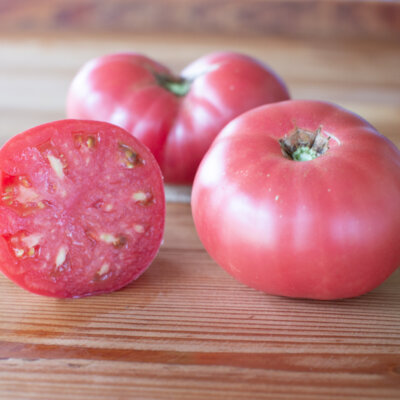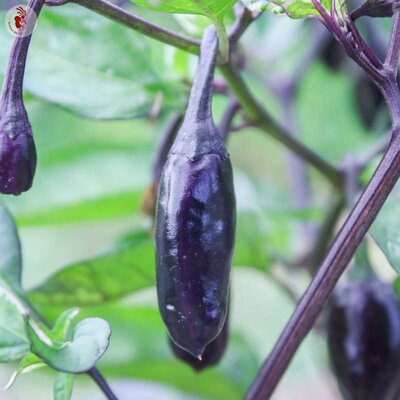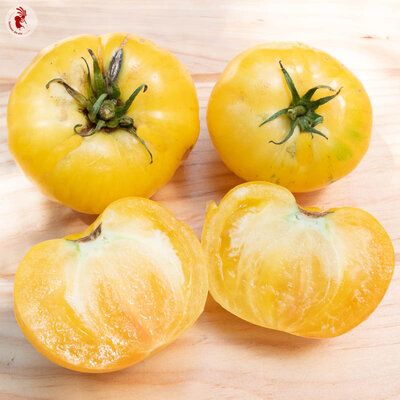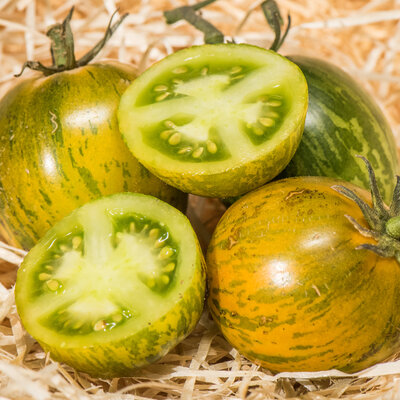Atomic Red - Red Carrot
This variety produces elongated roots with a bright red color due to a high content of lycopene, one of the precursors of carotenoids. Their crunchy flesh offers excellent flavor.
The color is retained, and even enhanced, during cooking.
Origin of Atomic Red carrots
Atomic Red Carrot, Daucus carota, is an early variety native to the United States. Its crunchy, elongated roots, 15 to 20 cm long, stand out for their pronounced flavor. They owe their blood-red color to their high lycopene content, a natural antioxidant pigment also found in tomatoes. This variety can be eaten raw, cut into strips or grated into salads, but it's when cooked that its sweetness is revealed. The color intensifies with cooking, closer to the red of beet.
How to sow Atomic Red carrot seeds?
Atomic Red carrot seeds are sown directly in the ground, from February to July. Choose a sunny spot to set up your crop, and favor rich, well-drained soil that stays cool.
- Sow carrot seeds in the vegetable garden, in rows 25 cm apart. Cover with a thin layer of soil and lightly plumb. Emergence takes place 6 to 21 days after sowing, at temperatures between 10 and 24°C. Keep the soil moist until the carrot seeds have germinated;
- When plants have 3 leaves, thin to 5 cm, then a few weeks later, to 8 cm. Protect young shoots from slugs if possible;
- Water regularly in the month following sowing to encourage good root development;
- Mulch the soil to keep the carrots cool.
Be careful during the first three weeks of root development: compressed soil and the presence of stones may deform the carrot as it matures.
What companion plants should I grow with carrots?
In the vegetable garden, carrots grow harmoniously with many other plants. Lettuce, tomatoes, beans and leeks make good companion plants. Onions, sage, mugwort and rosemary keep flies away, and carrots, like other plants in the Apiaceae family, attract many beneficial insects to the garden.
When to harvest Atomic Red carrots?
This variety of carrot can be harvested from June until the first frost, 75 days after sowing. If plants are mulched or frost-free, they can be harvested all year round, right up to flowering in spring.
To store, let the carrots dry for a few days before cutting off the tops a few centimetres above the collar, then wipe dry and store in a sheltered place such as a gauge, silo or cellar. They can also be stored in the ground in the vegetable garden. Cover them with a good layer of straw or leaves, at least 20 to 25 cm high, to protect them from frost. Carrots also keep well grated and lacto-fermented.
How to cook red carrots
Red carrots may surprise you with their rich flavor and bright color, but they're also a concentrate of vitamins and minerals. The Atomic Red variety stands out for its high lycopene content, a carotenoid responsible for its red hue. This phytonutrient is mainly known for its antioxidant properties, its benefits for the skin and its contribution to the prevention of certain cancers.
In the kitchen, carrots can be eaten raw, grated into salads, or steamed, pan-fried, roasted or simmered. As carrots are 90% water, they can also be made into juices and syrups.
These products may also be of interest to you
in the ground
Sow in rows 25 cm apart. Pack lightly. Thin to 5 cm, then to 10 cm when plants are 10 cm tall. If possible, protect young shoots from slugs. Sow in February and March in tunnels or trays, staggering sowing every 2 to 3 weeks to spread out harvesting.
Water regularly, but lightly, to encourage emergence, then more abundantly once a week the month after sowing to prevent the roots from "digging in". Carrots can be harvested all year round if the soil does not freeze or if it is protected by mulch.
February, March, October, November
April, May, June, July
April, May, June, July, August, September, October
in the ground
sunny, semi-shade
medium
all floor types
drained, furniture, rich
Daucus carota
early
From 50 to 150 g
1 gram
elongated
crunchy
Red
From 15 to 20 cm



